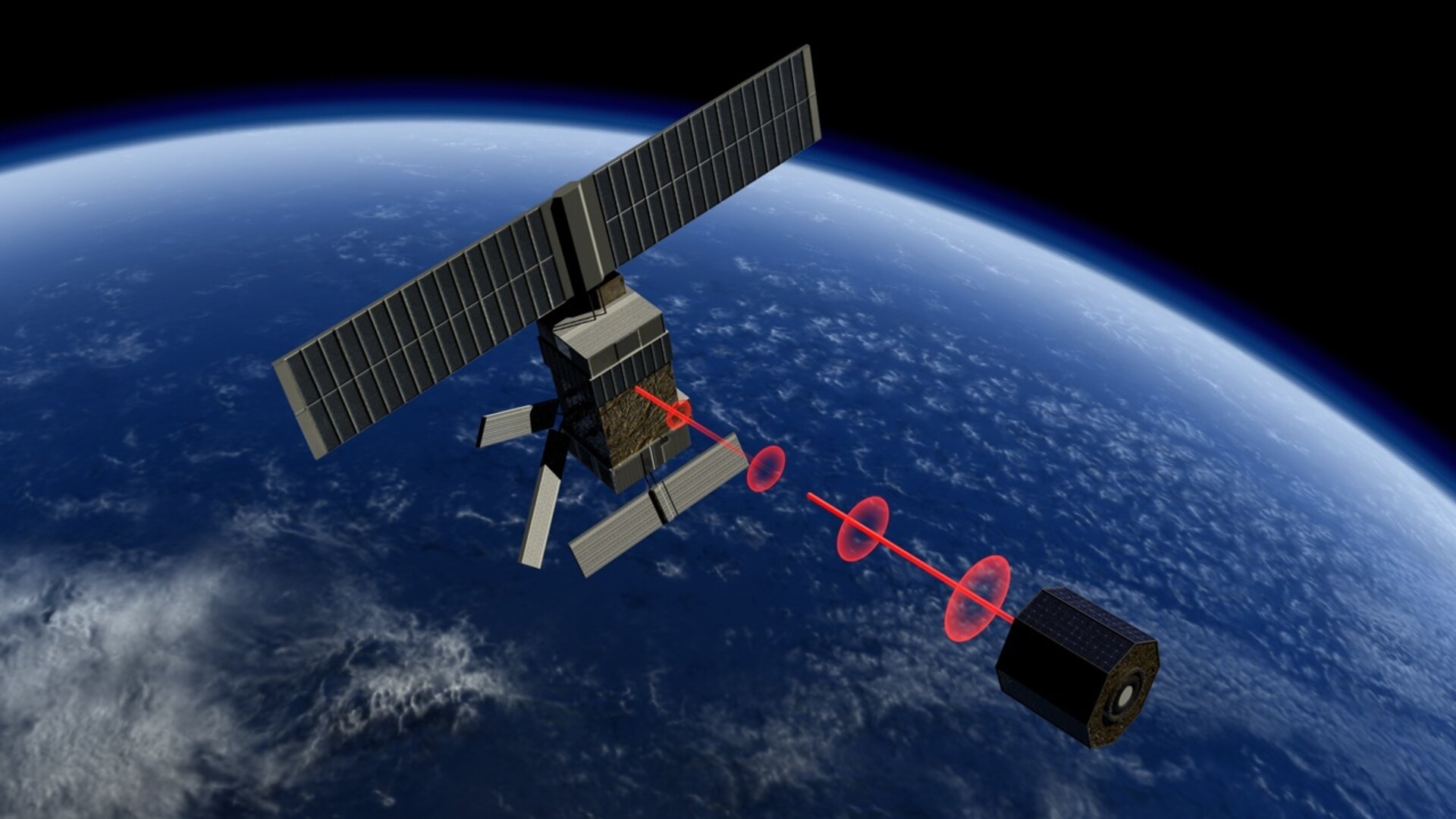
Space debris, also known as space junk, has become a growing concern in recent years. As humans continue to explore and utilize space, our activities have left a trail of debris orbiting the Earth. This debris includes defunct satellites, spent rocket stages, and fragments from collisions or explosions. With thousands of pieces of space debris floating in space, there is a pressing need for space debris remediation.
Space debris remediation refers to the techniques and strategies employed to remove or minimize space debris. It is a crucial area of research and development, as the presence of space debris poses significant risks to future space missions and even to human life on Earth. In this article, we’ll dive into 18 fascinating facts about space debris remediation, shedding light on the complexities of the issue and the innovative solutions being explored.
Key Takeaways:
- Space debris, also known as space junk, poses a significant risk to space missions and satellites. Innovative technologies and international cooperation are essential for capturing and removing this hazardous debris.
- With over 128 million pieces of trackable space debris, the need for space debris remediation is crucial for ensuring safe space exploration. From harpoons to AI, diverse strategies are being developed to address this growing concern.
The Growing Concern: Space Debris
Space debris, also known as space junk, refers to the vast amount of defunct objects orbiting the Earth. These include old satellites, spent rocket stages, and fragments from collision events, posing a significant risk to current and future space missions.
The Origin Stories: Where Does Space Debris Come From?
Space debris can originate from various sources, such as satellite explosions, intentional destruction, and accidental collisions. The accumulation of debris over time has created a complex and hazardous environment in space.
The Magnitude of the Problem
Currently, there are over 128 million pieces of trackable space debris larger than 1 cm in size, and countless smaller fragments. The sheer volume of debris poses challenges for ensuring safe space exploration and satellite operations.
The High-Speed Danger: Orbital Velocity
Space debris orbits the Earth at tremendous velocities, reaching speeds of up to 28,000 kilometers per hour. At such velocities, even the smallest debris can cause significant damage to operational spacecraft.
The Risk to Satellites and Spacecraft
Satellites and manned spacecraft are at risk of collisions with space debris, which can lead to mission failures and potential loss of human life. Protecting these critical assets is a key motivation for space debris remediation efforts.
The ‘De-Orbit’ Solution
One approach to space debris remediation is the ‘de-orbit’ strategy. This involves maneuvering satellites and defunct objects to re-enter Earth’s atmosphere, where they will burn up and disintegrate.
The Importance of Active Debris Removal
Active debris removal involves actively capturing and removing space debris from orbit. This approach aims to reduce the number of dangerous objects in space and mitigate the risk of collisions.
The Innovative Capture Methods
Various technologies are being developed to capture and remove space debris. These include nets, harpoons, robotic arms, and even spacecraft equipped with grappling mechanisms to safely capture and remove debris.
The Advantages of Harpoon Technology
Harpoon technology offers a viable solution for capturing large pieces of space debris. These harpoons can be deployed from specialized spacecraft, effectively spearing and securing debris for safe disposal.
The Promise of Nets and Snares
Nets and snares are being explored as alternative methods for capturing space debris. These innovative solutions aim to ensnare debris in a controlled manner, allowing for its safe removal from orbit.
The Role of Ion Thrusters
Ion thrusters, which use electric propulsion, are being utilized in space debris remediation efforts. These thrusters provide precise and controlled maneuvers to capture and de-orbit debris more efficiently.
The Collaborative Efforts: International Cooperation
Space debris remediation requires international cooperation and coordination. Organizations like NASA, ESA, and other space agencies around the world are working together to develop strategies and technologies to address the space debris problem.
The Challenges of Space Debris Tracking
Accurate tracking of space debris is essential for effective remediation. However, tracking small and fragmented objects in the vastness of space poses significant challenges, requiring advanced sensor systems and data processing techniques.
The Concept of Space Traffic Management
Space traffic management involves regulating and coordinating the movement of satellites and spacecraft to minimize the risk of collisions with space debris. This proactive approach is crucial for maintaining a safe and sustainable space environment.
The Use of Artificial Intelligence
Artificial Intelligence (AI) plays a vital role in space debris remediation. AI algorithms can analyze vast amounts of data and make predictions to optimize debris removal strategies, enhance tracking accuracy, and improve collision avoidance algorithms.
The Future of Space Debris Remediation
Ongoing research and development in space debris remediation will continue to drive innovation and improve technologies. It is crucial to address the space debris problem to ensure the long-term viability of space exploration and satellite operations.
The Importance of Space Sustainability
Space debris remediation is essential for creating a sustainable space environment for future generations. It is our responsibility to preserve the integrity of space and protect critical infrastructure orbiting our planet.
The Collaborative Cleanup Efforts
International efforts are underway to develop comprehensive space debris remediation strategies. Through collaboration, innovation, and responsible space practices, we can mitigate the risks posed by space debris and pave the way for a safer and more sustainable future in space.
Conclusion
In conclusion, space debris remediation is a critical and fascinating aspect of space exploration and operation. With the growing problem of space debris posing risks to current and future space missions, efforts to find innovative solutions and technologies have become a top priority. From giant nets and harpoons to lasers and robotic arms, various methods are being explored to tackle this issue head-on.By understanding the dangers and complexity associated with space debris, we can appreciate the importance of space debris remediation initiatives. These efforts not only help protect satellites and spacecraft but also pave the way for sustainable space exploration. As we continue to explore and expand our presence in the universe, finding effective ways to clean up space debris will be crucial for the long-term viability of space activities.Through collaborative efforts and advancements in technology, we can work towards a cleaner and safer space environment, ensuring a brighter future for space exploration and benefiting humanity as a whole.
FAQs
1. What is space debris remediation?
Space debris remediation refers to the process of removing or mitigating the risks associated with space debris in Earth’s orbit. It involves various strategies and technologies to clean up the space environment and ensure the safety of space missions.2. Why is space debris a problem?
Space debris poses a significant threat to satellites, spacecraft, and even astronauts. With thousands of defunct satellites, discarded rocket stages, and other debris floating in space, collision risks increase, potentially causing severe damage to valuable assets and hindering future space exploration.3. How does space debris remediation work?
Space debris remediation can be approached through active or passive methods. Active methods involve capturing and removing space debris using robotic arms, nets, harpoons, or lasers. Passive methods focus on designing new satellites and spacecraft to minimize the creation of debris and improving their deorbit capabilities.4. Who is responsible for space debris remediation?
Space debris remediation is a shared responsibility among space agencies, governments, and the international community. Collaborative efforts are necessary to develop and implement effective strategies to minimize the proliferation of space debris and clean up existing debris.5. What are the challenges of space debris remediation?
One of the significant challenges of space debris remediation is the sheer number and diversity of debris objects in various orbits. Additionally, the development of cost-effective and efficient technologies, as well as international cooperation, legislation, and funding, pose significant challenges in this field.
Space debris remediation remains a critical issue as humanity continues exploring the final frontier. Cutting-edge technologies and innovative strategies are being developed to tackle this growing problem, ensuring the sustainability of our space activities for generations to come. To learn more about the surprising facts surrounding space debris remediation technologies and intriguing strategies being employed, be sure to check out our other articles on this fascinating topic.
Was this page helpful?
Our commitment to delivering trustworthy and engaging content is at the heart of what we do. Each fact on our site is contributed by real users like you, bringing a wealth of diverse insights and information. To ensure the highest standards of accuracy and reliability, our dedicated editors meticulously review each submission. This process guarantees that the facts we share are not only fascinating but also credible. Trust in our commitment to quality and authenticity as you explore and learn with us.


